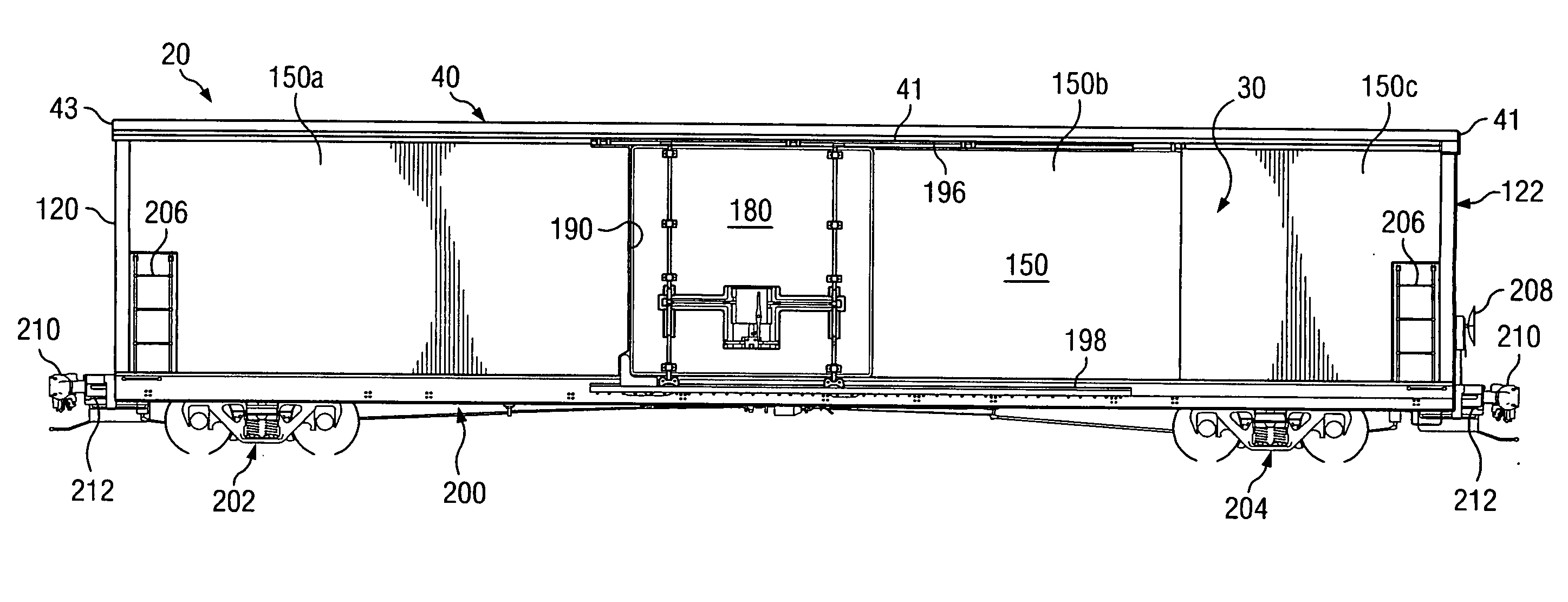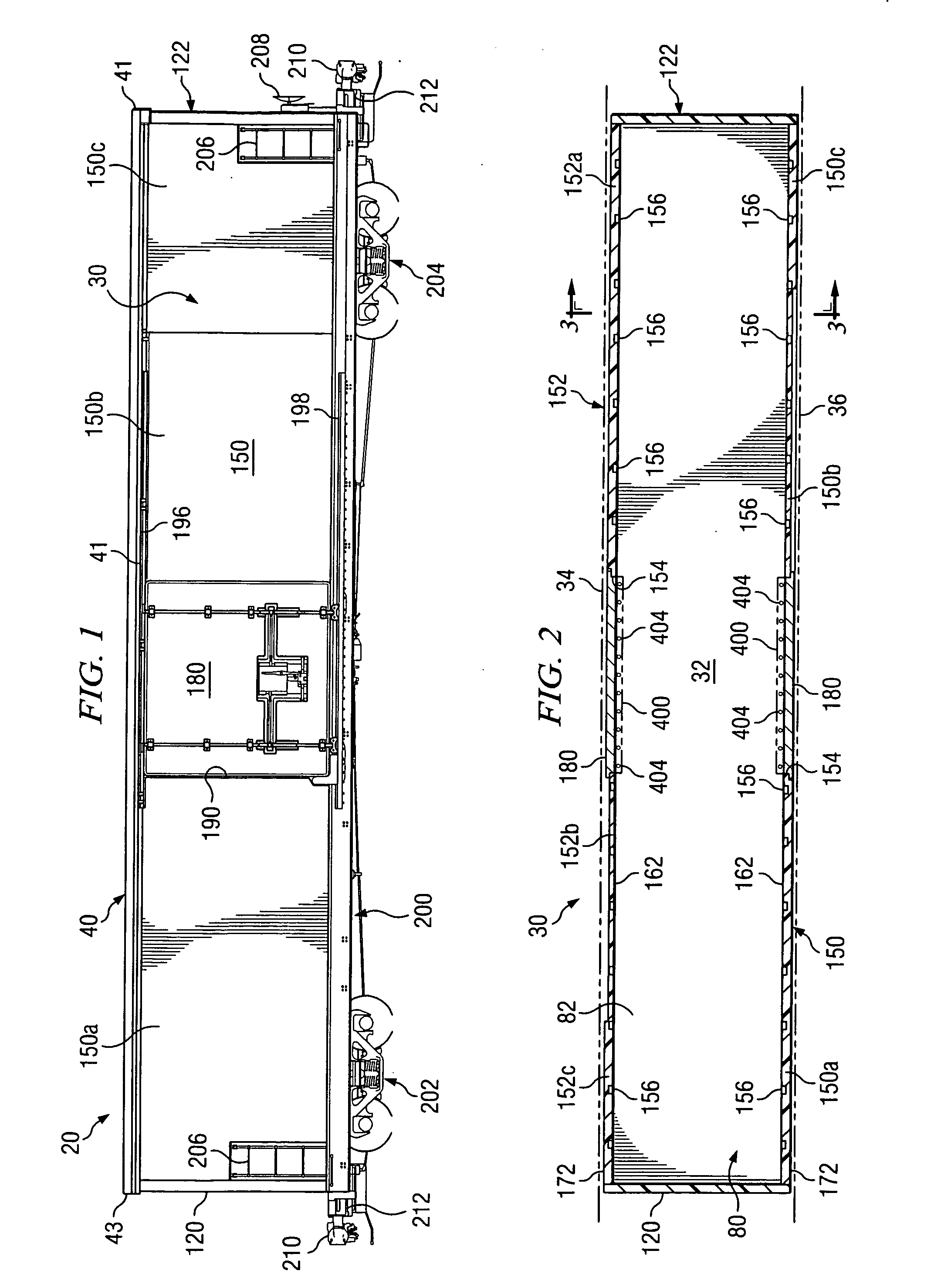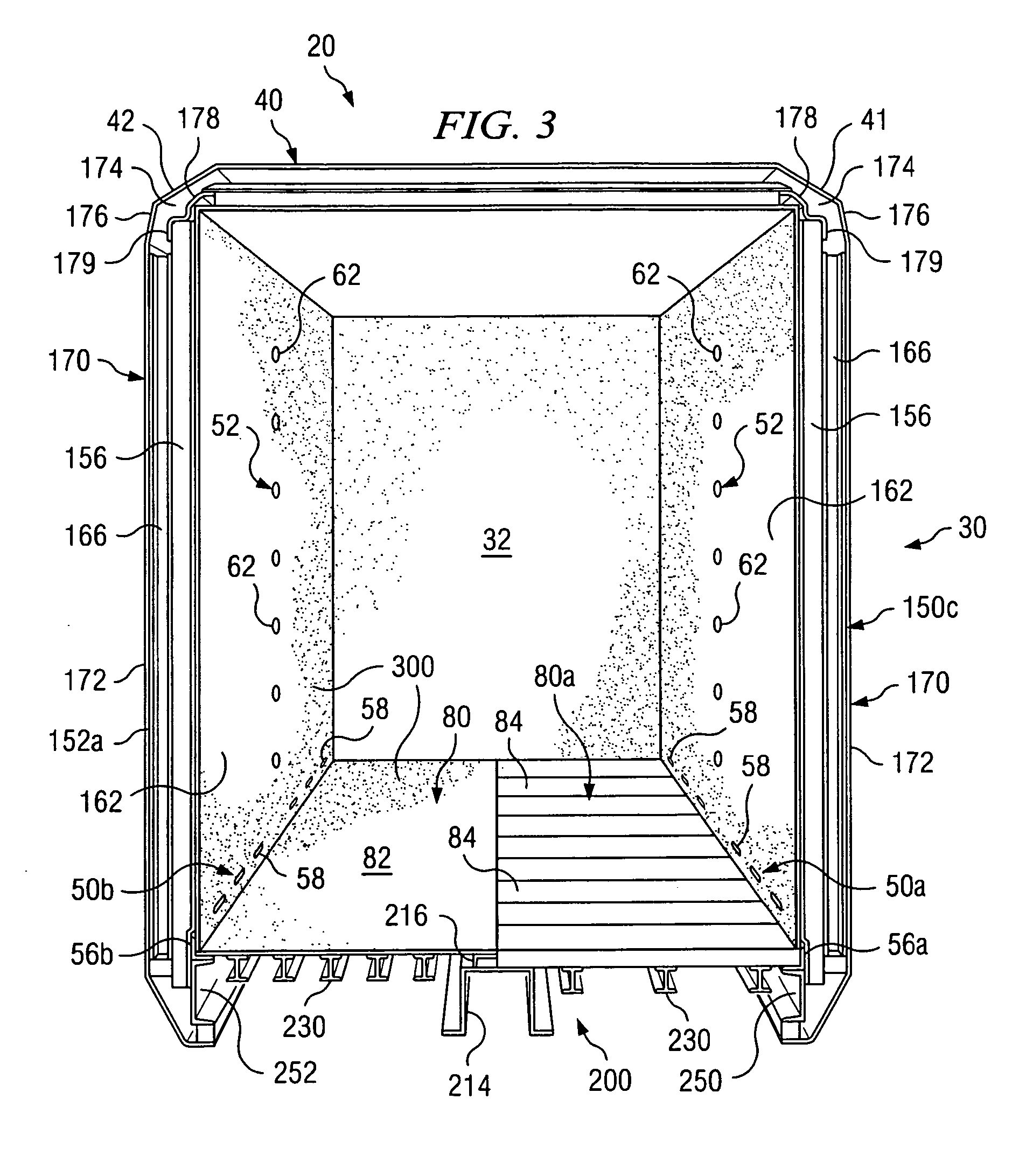Boxcar with load restraint system
a load restraint and boxcar technology, applied in the field of railway cars with load restraint systems, can solve the problems of increased maintenance costs, affecting the service life of the boxcar, so as to maximize the load carrying capacity, reduce maintenance costs, and minimize heat transfer rates
- Summary
- Abstract
- Description
- Claims
- Application Information
AI Technical Summary
Benefits of technology
Problems solved by technology
Method used
Image
Examples
Embodiment Construction
[0031] Preferred embodiments of the invention and its advantages are best understood by reference to FIGS. 1-13 of the drawings, like numerals are used for like and corresponding parts in the various drawings.
[0032] The term “boxcar” often refers to a railway car having a generally elongated box type structure defined in part by a roof assembly, a floor assembly, a pair of sidewall assemblies, and a pair of endwall assemblies which cooperate with each other to define a generally hollow interior satisfactory for carrying various types of lading. The terms “boxcar” and “box car” may be used in this application to refer to both insulated and uninsulated boxcars.
[0033] The terms “side sheet” and “side sheets” may be used in this application to refer to any type of material satisfactory to form exterior and interior surfaces of a sidewall assembly. For some applications, side sheets may be formed from wood, metal, composite materials or combinations thereof. Steel alloys and aluminum a...
PUM
 Login to View More
Login to View More Abstract
Description
Claims
Application Information
 Login to View More
Login to View More - R&D
- Intellectual Property
- Life Sciences
- Materials
- Tech Scout
- Unparalleled Data Quality
- Higher Quality Content
- 60% Fewer Hallucinations
Browse by: Latest US Patents, China's latest patents, Technical Efficacy Thesaurus, Application Domain, Technology Topic, Popular Technical Reports.
© 2025 PatSnap. All rights reserved.Legal|Privacy policy|Modern Slavery Act Transparency Statement|Sitemap|About US| Contact US: help@patsnap.com



